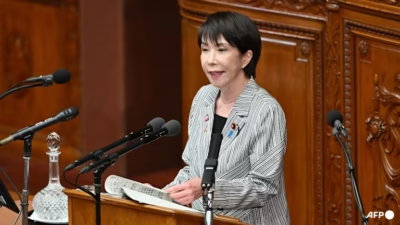The deepening economic relationship between China and the Cook Islands is stirring unease across the South Pacific. Last week, the Chinese research vessel Da Yang Hao arrived at the port of Avatiu to begin a deep-sea exploration mission conducted in partnership with the Cook Islands Seabed Minerals Authority (SBMA). The visit marks the start of a joint scientific survey and follows a five-year agreement announced earlier this year granting China rights to explore seabed minerals within the Cook Islands’ exclusive economic zone (EEZ).
To mark the vessel’s arrival, Cook Islands Prime Minister Mark Brown hosted a private welcoming ceremony for the Da Yang Hao crew, with the ship later opening its decks for public tours. Over the coming days, the vessel will carry out a three-day seabed survey northeast of Rarotonga, the nation’s largest island. The mission is a collaboration between SBMA and China’s Deep Ocean Affairs Administration (CDOAA).
“This cruise will conduct seabed surveys using deep-towed cameras, sediment samplers and multibeam echosounder systems. Seven Cook Island representatives will be participating onboard in both sampling and the data analysis,” said SBMA.
With a vast EEZ spanning more than 730,000 square miles, the Cook Islands has positioned itself as a potential hub for deep-sea mining. Its seabed contains polymetallic nodules rich in nickel, copper, and cobalt—critical minerals used in renewable energy and electric vehicles. Yet, the country’s push toward seabed exploration has drawn criticism from environmental organizations and marine researchers who warn of irreversible damage to largely unexplored ocean ecosystems.
China’s participation has further heightened geopolitical sensitivities. Its research fleet, including Da Yang Hao, has been accused of dual civilian and military purposes. During a 2021 voyage in the region, Palau accused the same vessel of illegally surveying within its EEZ. Investigations by journalists have alleged that Da Yang Hao covertly gathered bathymetric data potentially useful for Chinese naval operations, such as submarine deployment.
Regional allies have taken notice. New Zealand and Australia, both long-time supporters of Pacific Island nations, have criticized the Cook Islands’ growing alignment with Beijing. In a recent move, New Zealand suspended nearly $16 million in aid to the country. Foreign Minister Winston Peters defended the decision as a response to a “breach of trust” and “ongoing disagreement with Cook Islands over the meaning behind free association with New Zealand.”
The timing of Da Yang Hao’s mission is also noteworthy. Just a month earlier, the U.S. research vessel E/V Nautilus completed its own deep-sea survey in the Cook Islands’ EEZ. That expedition, conducted from October 1 to 21, was led by the U.S.-based Ocean Exploration Cooperative Institute under a research grant from the National Oceanic and Atmospheric Administration (NOAA).
The presence of both U.S. and Chinese deep-sea missions within the same jurisdiction underscores the growing competition among global powers for influence in Pacific mineral resources. As Cook Islands continues to navigate its economic ambitions and environmental obligations, the nation’s seabed has become the latest frontier in the geopolitical contest for critical minerals beneath the Pacific.




